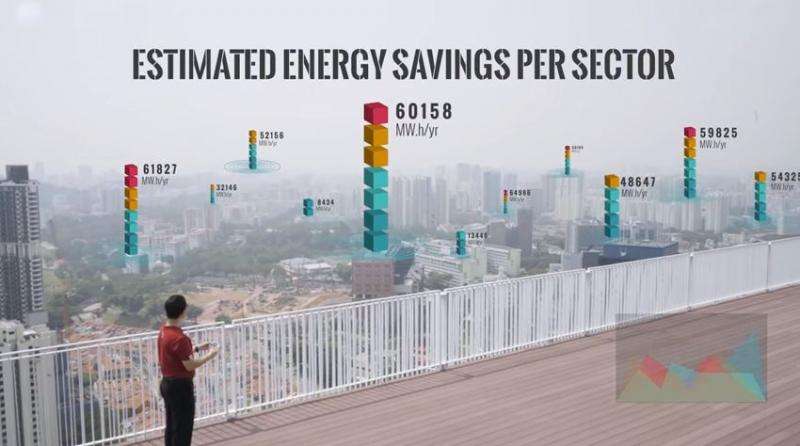February 9, 2016 weblog
Singapore team uses photos, AI, crowdsourcing to tag air quality

A project doer who is concerned about the effects of poor air quality has made a video in Singapore, "AI for Liveable Cities." Poor air quality is not just a challenge faced by Singapore, he said, with 7 billion of us sharing this planet.
As air quality is essential to our survival, we must answer the challenges: how do we manage good air quality and how do we optimize the deployment of renewable energy sources such as solar panels?
With those remarks, he introduced AirTick, thanks to the work of a team at Nanyang Technological University in Singapore. He said the activity involved was simple. A person takes a photo of the surrounding environment.
What then is AirTick? The app was designed to estimate air quality by analyzing large numbers of photos of the city.
Asian Scientist Magazine described it as a technology framework which uses artificial intelligence powered by crowdsourcing to monitor air quality.
The team are named on the video presentation as Zhengxiang Pan, Han Yu, Chunyan Miao, Cyril Leung, Daniel Wei Quan Ng, Kian Khang Ong, Bo Huang and Yaming Zhang.
"A smartphone app provides the opportunity for a low-cost solution – particularly in a country such as Singapore, which has one of the world's highest levels of smartphone ownership per capita," said Aviva Rutkin in New Scientist.
Rutkin discussed how this would all work:
AirTick will collect photos in bulk for any city being tracked. The images will be checked against official air-quality data and the information will be used to train a machine-learning algorithm.
As a result, the level of pollutants in the air can be estimated, based on the evidence. The push is to gradually improve the algorithm. The public will be able to rely on accurate real-time estimates of the air quality in their neighborhoods.
"Any camera-enabled mobile device installed with AirTick can become an air-quality sensor," said a team member in New Scientist.
Besides air quality monitoring, AirTick can identify good places for installing solar panels, thanks to the kind of data it generates, said the presenter in the video.
What's next: A prototype app was made available to 100 users in November, and the group hopes to roll it out to the public this year.
Reception over their idea has been quite favorable for the very attempt at harnessing crowd power for the end goal of better quality of life in cities.
Actually, crowdsourcing for the monitoring of air pollution is nothing new. Back in 2012, CityLab reported how scientists from the University of California, San Diego, had embarked on a monitoring project for crowdsourcing feedback on air pollution.
They gave smartphones that sense pollution to 30 participants. The team tracked their environmental data feeds for a month. At the time of that writing, they were looking forward to a legion of smartphone users moving through the city for a real-time geographic map of air quality. John Metcalfe wrote, "this army of flesh-and-machine sensing units will provide a clearer picture of what's really in the air, block by block."
© 2016 Tech Xplore


















